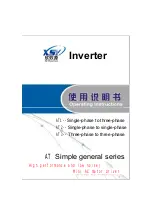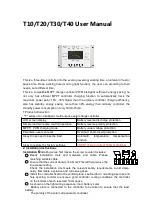
19
INSTALLATION AND OPERATION MANUAL SOLAR MODULES DUO-G5.X – HANWHA Q CELLS – NA
18
INSTALLATION AND OPERATION MANUAL SOLAR MODULES DUO-G5.X – HANWHA Q CELLS – NA
5 GROUNDING
Functional grounding
•
For installations located in tropic regions (between 23.5° N and
23.5° S) with a module tilt of < 5°, functional grounding at the
negative generator connection on the DC side must be implemented.
Ä
Ensure that the difference of potential between the negative
generator connection and the PE(N) of every MPP tracker of the
respective inverters is 0 V.
Ä
Follow the directions of the inverter manufacturer.
Ä
Only use inverters which include lincensed grounding kits.
Ä
Functional grounding has also to be implemented in installation
sites with increased salt content in the air (e.g. close to the sea).
Protective Grounding
In order to prevent electrical shock or fire, the frame of the module
as well as any non-current-carrying metal parts of the system must
be grounded. While this section provides some information about
grounding the Q CELLS frames and modules, reference should be
made to local statutes and regulations for specific requirements
on grounding. The U.S. National Electrical Code addresses these
issues in Article 250. Proper grounding is achieved by bonding all
exposed non-current-carrying metal equipment to the appropriately
sized equipment grounding conductor (EGC) or racking system
that can be used for integrated grounding. Q CELLS frames are
protected from corrosion with an anodized coating, which has to
be penetrated in order to ensure proper bonding. The different
methods listed below are suggested methods for an appropriate
bond between the frame and the EGC or racking system (that will
have to be properly grounded). The method appropriate for any
individual installation will depend on multiple factors.
Option A: Use of a grounding lug
When a predrilled mounting hole is present in the module frame,
a listed grounding lug can be bonded to the frame. These holes
•
Dimensions shown are in inches.
0.177” (+0.008/-0)
±0.08
0.79”
0.47”
±0.08
PV Laminate
Backing Nut (Stainless Steel)
Toothed Lock Washer (Stainless Steel
or tin-plated metal)
Grounding Lug (Stainless Steel)
Equipment
Grounding
Conductor
Aluminum
Frame
Screw (Stainless Steel)
are marked with a ground symbol, as shown below on the frame
section drawing: To install the grounding lug, follow the specified
instructions of the manufacturer. The grounding lug should be
made of stainless steel or tin plated metals such as aluminum to
avoid corrosion. The grounding lug should be attached to the frame
grounding hole using a stainless steel screw, toothed lock washer
or KEPS nut (in order to penetrate the anodized layer) and backing
nut. Care should be taken to avoid the use of grounding hardware
of dissimilar metals, which may lead to corrosion
Option B: Integrated grounding methods
The Q CELLS modules can be bonded with the racking system
using UL1703 or UL2703 certified integrated grounding methods.
The racking system will then have to be grounded so that the
overall system is properly grounded. The listed racking system
and grounding device should be installed in accordance with
the manufacturers’ instructions. An example of such integrated
grounding method is the use of a WEEB clip or Schletter plate
between the module and the racking system, when mounting
the module. The WEEB washers are generally compatible with
Q CELLS modules, however each combination module / racking
system requires a specific WEEB washer size. Note that WEEB clips
are intended for single use only; they must not be reused after
removal or loosening. Refer to Wiley’s installation instructions for
the specific use of WEEB washers.
An example of such integrated grounding method is the use of a
washer recognized as meeting UL2703 requirements between the
module and the racking system, when mounting the module. For
example, WEEB washers are generally compatible with Q CELLS
modules, however each combination module / racking system
requires a specific WEEB washer size. Note that WEEB washers
are intended for single use only; they must not be reused after
removal or loosening. Refer to Wiley’s installation instructions for
the specific use of WEEB washers.
6
FAULTS AND DEFECTS
DANGER!
Risk of fatal injury due to electric shock!
Ä
Do not attempt to fix any problems yourself (e.g., glass
cracks, damaged cables).
Ä
Please contact an installer or Q CELLS Technical Customer
Service Department.
Ä
Do not disconnect modules yourself.
Ä
Please commission a trade specialist.
Ä
Dispose of modules in accordance with the local disposal
regulations.
7 DISPOSAL






























